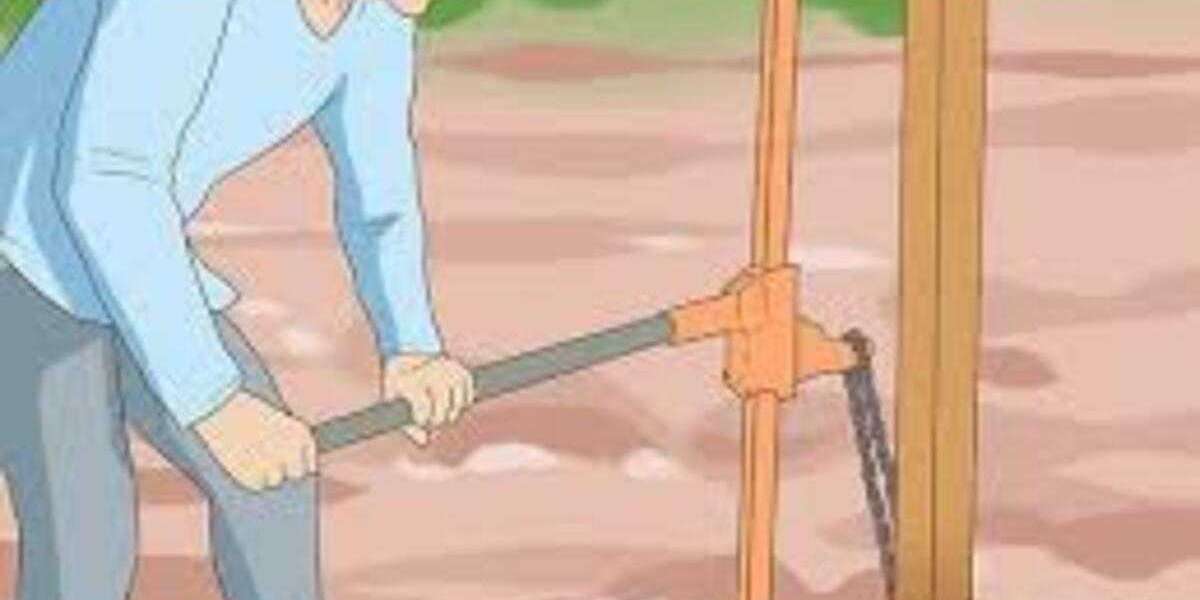Pulling a post might seem like a straightforward task, but achieving success without unnecessary strain or damage requires planning, the right tools, and proper techniques. Whether you are removing a fence post, mailbox post, or another type of post, understanding the nuances of the process is key to preserving the surrounding area and saving time. In this guide, we’ll uncover the secrets behind successful post pulling and discuss the importance of tools like pull a post for sale to make the process easier.
Why Post Pulling Can Be Challenging
Posts are installed to remain secure in the ground, often surrounded by concrete or compacted soil. Over time, factors such as soil settling, root growth, and environmental exposure can further anchor the post, making removal more challenging.
Common challenges include:
- Concrete Bases: Posts embedded in concrete require significant effort to extract.
- Soil Compaction: Hard, compacted soil can grip the post tightly.
- Obstructions: Roots, rocks, or underground utilities may complicate removal.
Without proper techniques, post pulling can lead to damaged tools, strained muscles, or a torn-up yard.
Key Factors for Successful Post Pulling
The following factors contribute to the successful removal of a post:
- Preparation: Understanding the post’s condition and the surrounding environment.
- Equipment: Using the right tools for the job, such as a reliable post puller.
- Technique: Applying steady and controlled force rather than brute strength.
- Post-Removal Care: Restoring the area to its original state after the post is removed.
The Tools You’ll Need
Having the right tools makes a significant difference in the ease and efficiency of the job. Here’s a list of essentials:
- Post Puller: A specialized tool that provides leverage and control for removing posts. Pull a post for sale options are available online and at hardware stores.
- Shovel: To loosen the soil around the post and expose its base.
- Sledgehammer: For loosening or breaking up concrete bases.
- Jack and Chain: For providing additional lifting force on stubborn posts.
- Protective Gear: Gloves, goggles, and sturdy shoes to ensure safety.
Steps to Prepare for Post Pulling
Proper preparation ensures a smooth and damage-free process.
1. Assess the Post
Start by inspecting the post to determine how it was installed and its current condition. Look for:
- Signs of rot, especially in wooden posts.
- The presence of concrete at the base.
- Obstructions like roots or rocks.
2. Clear the Area
Remove any obstacles near the post, such as plants, rocks, or debris. Protect nearby structures or landscaping with tarps or boards.
3. Gather Supplies
Ensure all necessary tools are on hand before starting. If you’re considering investing in tools, compare pull a post for sale options to find one that suits your needs.
4. Loosen the Soil
Watering the ground around the post a day or two in advance can soften the soil and make removal easier.
Proven Methods for Post Pulling
Let’s explore the most effective techniques for pulling a post:
1. Manual Removal
For smaller posts or those not embedded in concrete, manual removal may suffice.
- Step 1: Dig around the base of the post to expose its bottom.
- Step 2: Wiggle the post back and forth to loosen it.
- Step 3: Pull upward with steady force. If necessary, use a lever for extra leverage.
Best For: Posts in soft soil or those without concrete bases.
2. Using a Post Puller
A post puller is one of the best tools for removing posts efficiently.
- Step 1: Secure the puller around the post base.
- Step 2: Operate the puller by applying steady pressure, which lifts the post vertically out of the ground.
- Step 3: Check for any remaining debris and remove it.
This tool minimizes the physical effort required and reduces the risk of damage to your yard. Investing in pull a post for sale products can save time and energy, especially for larger projects.
Best For: Posts with or without concrete bases.
3. Jack and Chain Method
This method uses a car jack and a sturdy chain to lift the post.
- Step 1: Wrap the chain securely around the post.
- Step 2: Attach the chain to the jack and position the jack on a stable surface.
- Step 3: Slowly crank the jack to lift the post out of the ground.
Best For: Heavy-duty posts or those embedded in concrete.
4. Breaking the Concrete Base
If the post is embedded in a large concrete base, breaking the concrete may be necessary.
- Step 1: Use a sledgehammer or chisel to break the concrete into smaller pieces.
- Step 2: Remove the post and any concrete debris.
- Step 3: Fill the hole with fresh soil.
Best For: Posts in large or stubborn concrete bases.
Secrets to Avoiding Yard Damage
One of the biggest concerns during post pulling is preserving the yard’s condition. Follow these tips to avoid damage:
- Work Slowly: Avoid rushing, which can lead to mistakes or unnecessary digging.
- Use Protective Materials: Place boards or tarps under tools to protect grass and soil.
- Plan the Cleanup: Prepare to fill holes and remove debris immediately after the post is out.
- Water Strategically: Loosen the soil with water, but avoid overwatering, which can create mud and make cleanup harder.
Post-Removal Cleanup
After successfully removing the post, it’s important to restore the area:
- Fill the Hole: Use fresh soil or topsoil to fill the hole left by the post. Compact the soil to prevent settling.
- Replant Grass: If the removal disturbed your lawn, reseed or lay sod to cover bare spots.
- Dispose of Debris: Properly discard or recycle materials like concrete, wood, or metal.
Tips for Choosing the Right Post Puller
If you plan to purchase a post puller, consider the following factors:
- Durability: Look for tools made of high-quality materials that can withstand repeated use.
- Versatility: Some pull a post for sale options come with attachments for different post types.
- Ease of Use: Choose a design that is user-friendly and doesn’t require extensive assembly.
- Customer Reviews: Check reviews to learn about the performance and reliability of the tool.
When to Call a Professional
In certain situations, hiring a professional may be the best option. Consider professional help if:
- The post is located near sensitive structures or utilities.
- You lack the tools or experience for the job.
- The post is embedded in a particularly large or stubborn concrete base.
Professionals have the expertise and equipment to handle complex removals while minimizing yard damage.
Conclusion
Successfully pulling a post without damaging your yard requires a combination of preparation, the right tools, and careful execution. Whether you choose manual methods, a post puller, or the jack and chain technique, following the steps outlined in this guide will help you achieve your goal efficiently. Investing in tools like pull a post for sale options can further simplify the process and ensure long-term utility for future projects.
With proper planning and cleanup, you can maintain the beauty of your yard while safely removing unwanted posts.














